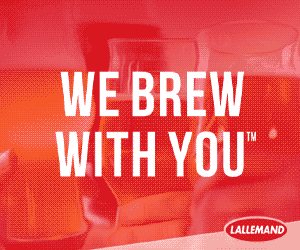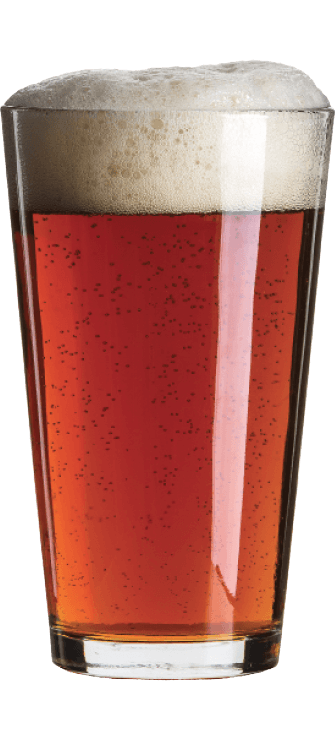Märzen and Oktoberfest
How many of us brew in March so that we may drink beer in September? Not very many, I would imagine — it’s a long haul through the late spring and summer, a long time until tasting the results of our hard work. Yet if we were anticipating something as exquisite as a fine Märzenbier, I believe the waiting would be easier.
Prior to the advent of mechanical refrigeration, brewers were always subject to the hard rules of climate and season. Few yeasts perform well when the temperatures climb into the 70s and 80s, and many brewers suspended operation throughout the warmest months. This is still true in Belgium’s lambic breweries, which have avoided the technological mark of time.
A lot of homebrewers can relate, I’m sure. Without a cool basement or a spare refrigerator, many homebreweries shut down in the summer, their owners surviving on commercial beers or the dwindling supply brewed in the spring.
In the middle of the 19th century, Anton Dreher and Gabriel Sedlmayr revolutionized brewing science. Hell, they revolutionized beer when they “discovered” bottom-fermenting yeasts and developed the technology to commercially brew lager beers. Brewing in separate cities (Vienna and Munich) but in collaboration, they turned Europeans into lager drinkers virtually overnight. (Brewers in Plzen introduced their very pale, enormously successful version almost immediately afterward.)
While the Munich lagers tended to be dark and fairly sweet, Dreher’s Viennese version was copper colored and drier. He used the same high- quality Moravian malt that was used in pilsner, but his Vienna malt was kilned at higher temperatures, resulting in greater color and more malt flavor.
Dreher also perfected the so-called Märzen process, which called for the beer to be brewed in March (Märzen is the German word for March). The final stages of fermentation were carried out in cold cellars throughout the next six to eight months, for special release in the fall. The beer could, of course, be brewed throughout the winter, but the March brews emerged as a special treat at the Oktoberfest, an enormous party originally held in 1810 to celebrate a royal wedding.
Dreher originally brewed his beer only in Vienna, but demand was great enough that he opened breweries in Bohemia, Hungary, and Italy. His friend Sedlmayr brought the style to Munich, where the chemistry of the malt and the chemistry of the local water joined to produce a spectacular version of the beer.
The Munich beer, often known as “Oktoberfest,” has survived to this day, although most of the commercial versions are paler, a little milder, and perhaps a little less malty than the original. Whether known by its brewing time (Märzenbier), its drinking time (Oktoberfest), or even its point of origin (Vienna), the beer is one of the ultimate expressions of lager brewing.
A prime example is marked by a balance of rich malt and spicy hop, polished by the long, cold maturation, and is rich copper in color. An elegant, complex, and satisfying beer — but, sadly, a difficult beer to find, even in the fall. While Märzenbier was once in high demand in Europe, over the years it fell victim to the overwhelming popularity of golden, hoppy pilsners. It has entirely disappeared in Vienna, and even the German versions have paled (some quite literally) over the years, although the versions brewed by Spaten, Paulaner, EKU, and others are still fine beers.
Respectable versions are brewed occasionally in Mexico, where central European immigrants introduced their brewing heritage. These beers tend to be darker than the standard elsewhere, in keeping with the variation created by Santiago Graf in the late 1880s.
Like Dreher and Sedlmayr before him, Graf realized the essential value of fine ingredients. Dissatisfied with North American supplies, Graf imported all his malts and hops from Europe. Noche Bueno (a Christmas-time specialty) and Negro Modelo are particularly good examples of the Graf variant.
In the United States the craft beer explosion has resulted in a lot of “Märzens” and “Oktoberfests,” but few of the brewers seem to have invested the extra care necessary to produce a true version. Some of the beers, such as Thomas Kemper’s Oktoberfest or the Samuel Adams version, are delicious in their own right but lack the delicate balance of a true Märzen. Others fall completely off the mark.
Perhaps the best US version I’ve tasted may have disappeared. In the 1980s, one-time homebrewer Gary Bauer of Milwaukee brewed his own superb version in several commercial breweries. Plagued by trademark problems, the beer came to be known as Ambier and has appeared spottily over the years. Bauer’s attention to quality was probably his undoing, because the cost of producing a Märzenbier came into conflict with the harsh reality of a market used to very cheap beer.
Perhaps he was merely ahead of his time and will try again. Not having been around for Dreher’s and Sedlmayr’s brewing triumphs, the best Märzen I’ve tasted was a homebrewed version — not just any home, true, but the homebrewery of George Fix, who has been crusading for the restoration of Vienna to its former glory. Like Dreher, Sedlmayr, Graf, and Bauer, Fix makes one central point: You cannot brew an exceptional beer, in particular not an exceptional Märzenbier, without using the finest ingredients.
Building a Märzenbier
Given the scale in which homebrewers work, and the incredible access that we now have to fine ingredients, there is no reason to short change something as potentially rewarding as a Märzenbier. While North American maltsters such as Great Western, Gambrinus, and Schreier produce very good malts, the best pilsner malts still come from Germany and Belgium.
If imported pilsner malt is out of the question, use the best possible two-row lager malt, such as those from the maltsters mentioned above. By all means use the best quality specialty malts available — once again, Belgian malt by preference. The procedure we will step through here is a relatively simple, but alternative, all-grain mash.
The procedure, which makes use of two unusual approaches, is designed to enhance both the malt and hop flavors of the beer. A double decoction mash can also be used to excellent effect, as can a straightforward infusion mash. But in the pursuit of excellence, try something a little different.
The hops can only be noble aroma hops! Low alpha acid, high aroma and flavor, and distinctly European, these are best used in blends rather than as single-variety additions. The blends given in the recipe are a suggestion only. Mt. Hood hops are used as a substitute for the much more rare, and expensive, Hallertauer Mittelfrueh, and American Tettnanger hops are an acceptable substitute for the imported version.
The hops should not predominate, but they should be apparent, both in bitterness and in flavor. Hop aroma is delicate but present.
Any good lager yeast, particularly a Bavarian version, is suitable for Märzenbier. Pitching rates for lager yeasts are roughly twice that for ales, so be sure to get your yeast started well ahead of time. If you start a week in advance and add a quart of medium to the starter every day or so (about four to five quarts total), you should have plenty of viable cells for a five-gallon batch. More will be needed, obviously, for larger batches.
Individual lager strains vary tremendously in their temperature tolerances and preferences. Some, such as Wyeast 308, require a lot of attention and precise temperature changes. Wyeast 2206 is a relatively forgiving strain and easy to use. If you have a favorite lager yeast you’re comfortable with, by all means try it for your Märzenbier. Brewing water should be soft or slightly carbonate. If you have very hard water, you will have to make some serious adjustments to it — or stick to India pale ale.
Your Technology
You will need some form of refrigeration. Homebrewer Steve Klafka used to produce excellent lagers by packing snow around his carboy every morning, but he could only do it in winter, and here in Portland the supply of snow is paltry and unreliable. Same goes for the notion of cutting ice in the local lake and storing it in deep cellars through the summer — no ice! So (unless you live in Wisconsin) you’re going to need a refrigerator that isn’t full of food.
In fact to do this properly, you’ll need a dedicated refrigerator with a real thermostat, one that can be set to a specific temperature and hold that temperature with very little variation. (Thermostats like this are easy to come by from homebrew supply stores and industrial suppliers.)
The whole process of brewing lagers is tremendously simplified by some form of kegging system. The beer will spend six to eight weeks or more lagering, and by the time it is done there won’t be any yeast left in suspension for bottle conditioning. It’s true that you can re-pitch fresh yeast and bottle, but after going to all that trouble to polish the beer, it seems somewhat pointless.
With Cornelius kegs you can dispense directly from the keg or use a counter-pressure bottler to package the beer for competitions or gifts (to writers, editors, you know…). The beer I’m going to define here assumes you have the necessary equipment: a mash/lauter tun of some sort, a kettle large enough to boil all of the wort, and a wort chiller. It’s true that you can side-step some of this by brewing the extract-grain version, but you’ll be happier with the result if you do it from scratch. Borrow the equipment!
Brewing the Beer
This mashing technique doesn’t use a traditional sparge, and the volume of malt has been raised by one-third to compensate. If you intend to do a decoction mash or a standard infusion mash, reduce the grist accordingly. The recipe is for five gallons, but this is a lot of work and a long time to wait for such a piddly amount. If you have the capacity, feel free to double the batch.
The Recipe
- 14 lbs. DeWolf-Cosyns pilsner malt
- 1.75 lbs. D-C cara-Vienne malt
- 0.75 lbs. D-C cara-Munich malt
- 0.75 oz. Tettnanger hops (4% alpha), 0.25 for 90 min., 0.5 oz. for 75 min.
- 1.5 oz. Mt. Hood hops (3.2% alpha), for 60 min.
- 0.75 oz. Saaz (3% alpha), for 30 min.
- 1.5 tsp. rehydrated Irish moss
- 4- to 5-qt. starter of Wyeast 2206 or GW Kent L32
OG = 1.060 FG = 1.012
The Mash
One of the side benefits of this procedure is that you don’t need to heat sparge water Ñ ergo, no second kettle. If you have a direct-heated mash tun, you can simply add the total volume of water (about 1.25 to 1.5 quarts per pound of malt). I use a primitive camp-cooler system and add water twice, for a two-step infusion. Cover the false bottom of the mash tun with 140° F water and then add the crushed grain and more water, stirring thoroughly so that all the grain is moistened and there are no lumps. Some form of paddle works much better at this than a spoon, but use what you have.
About 4.25 gallons, total, brought my mash to 130° F. You may need to make adjustments in your own system, but this should be close. Put another three gallons on to boil, and let the mash rest for 30 minutes. Carefully stir the boiling water into the mash. This should raise the mash temperature to about 152° F. Hold for 60 minutes or until an iodine starch test is negative. Slowly run all the liquid out of the mash tun and into the kettle. I run off into gallon jugs, then transfer to the kettle. It’s not a perfect solution, but it does allow me to keep track of volume. (At this point, you can sparge the grain and collect the wort for “small” beer. Frankly, the notion has never held any appeal for me; I like my beers “big.”)
The Boil
After the first gallon has been added to the kettle, add the first hops (0.25 oz. Tettnanger). When the bottom of the kettle is well covered with wort, start the heat and bring to a boil as you continue to add wort. Using tap water, bring the total volume to six to 6.5 gallons (or 11.5 gallons for a 10-gallon batch). Boil vigorously for 15 minutes and add the remaining Tettnanger. Boil 15 more minutes and add the Mt. Hood hops. Boil 30 more minutes and add Irish moss and Saaz hops. Total boil is 90 minutes. Cool.
Fermentation
Chill the wort to 45° to 50° F, aerate thoroughly, and pitch the yeast. Transfer the fermenter to refrigeration and hold at 42° to 45° F for primary fermentation (10 to 14 days). There are two distinct possibilities for lagering Märzenbier. You can create excellent beer by holding the beer for six to eight weeks. Allow the beer to finish out, then reduce the temperature to 34° to 36° F for the duration of the lagering period. Don’t serve it at that temperature, of course! The classic Märzenbier process calls for a six- to eight-month lagering period. If you have the patience to try this, transfer the beer to a lagering vessel (another keg) when the specific gravity has dropped to about 1.020. Lower the temperature to 33° F and hold for half a year. Six months 180 days. And be sure to invite the BYO staff over for a taste!







